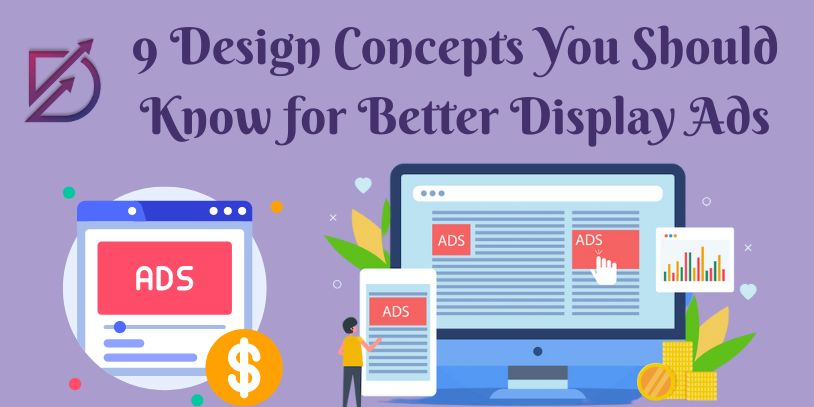Designing effective display ads can be a challenging task, especially with the ever-changing digital landscape and the abundance of advertising options available. These are the fundamental guidelines that help ensure that your design is effective, aesthetically pleasing, and communicates the intended message to your audience. However, by mastering a few key design principles, you can create display ads that stand out, engage your audience, and drive conversions.
Here are five design principles to master for better display ads:
1. Keep it simple:
When it comes to display ads, less is often more. Avoid overcrowding your ad with too much text or too many images. As this can make it difficult for users to process the information and can detract from the overall message. Instead, focus on delivering a clear, concise message that is easy for users to understand at a glance.
2. Use high-quality images:
The images you use in your display ads should be visually appealing and of high quality. Poorly-lit or pixelated images can detract from the overall appeal of your ad and may even turn off potential customers. Make sure to use clear, crisp images that are relevant to your message and that will grab the attention of your audience.
3. Use compelling headlines:
Your headline is often the first thing that users will see when they come across your display ad, so it’s important to make it count. A compelling headline should be attention-grabbing, informative, and relevant to your target audience. It should also be easy to read and understand, as users often only spend a few seconds looking at an ad before deciding whether to engage with it further.
4. Use contrasting colors & Hierarchy:
Using contrasting colors in your display ad can help to draw the eye and make your message stand out. Consider using a color scheme that includes a mix of light and dark colors, or a combination of warm and cool tones. Just be sure to avoid using colors that are too similar or that clash, as this can make the ad difficult to read and may turn off potential customers.
Hierarchy refers to the order in which elements are presented in a design. By creating a hierarchy of information, you can guide the viewer’s eye through the ad and ensure that the most important elements are noticed first. You can use size, color, and position to establish a hierarchy in your display ad.
Check Some better Display Ads Examples
5. Use whitespace effectively:
Whitespace, or negative space, is the empty space surrounding the elements in your display ad. While it may seem counterintuitive to leave space blank, using whitespace effectively can actually help to draw the eye to the most important elements in your ad and make it easier for users to process the information. Don’t be afraid to leave some breathing room around your text and images, as this can make your ad more visually appealing and easier to read.
6. Balance:
Balance refers to the distribution of visual weight in a design. In display ads, balance is important. Because it helps ensure that the ad is visually appealing and draws the viewer’s attention to the most important elements.
There are two types of balance: symmetrical and asymmetrical. Symmetrical balance is when the elements on either side of a central axis are evenly balanced. While asymmetrical balance is when the elements are not evenly balanced but still create a sense of balance.
7. Contrast:
Contrast is the difference between two elements, such as color, size, or typeface. Using contrast in your display ad can help draw attention to specific elements and make them stand out. For example, you can use a bright color to highlight a call-to-action button or use a large font to make a key message more prominent.
8. Alignment:
Alignment refers to the way elements are positioned in relation to each other. Proper alignment helps create a sense of order and unity in your design. In display ads, alignment is especially important because it helps ensure that the ad looks cohesive and professional.
9. Typography:
Typography is the art of choosing and arranging typefaces to create a clear and effective visual hierarchy. In display ads, typography is important because it helps convey the intended message and establish a brand’s voice. Choose typefaces that are easy to read, and be sure to use size and color to create a hierarchy of information.
By following these design principles, you can create display ads that are visually appealing, easy to understand, and effective at driving conversions. Just remember to keep your message clear and concise, use high-quality images and headlines, and use contrasting colors and whitespace effectively to make your ad stand out.

